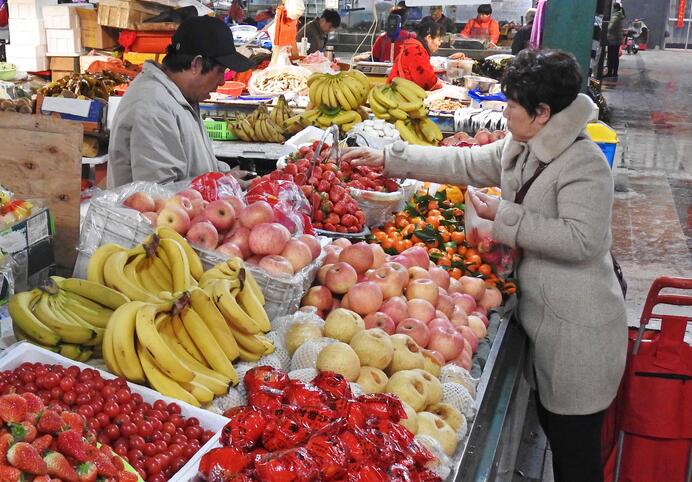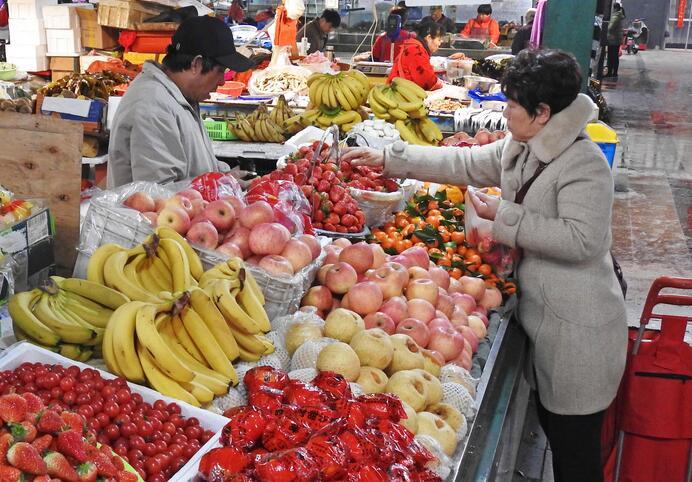
File Photo: Citizens select fruit at a market in Lianyungang, east China's Jiangsu Province. (Xinhua/Geng Yuhe)
BEIJING, May 9 (Xinhua) -- China's consumer prices rose to the highest level in six months while inflation at the factory gates also quickened, reinforcing the view that economic growth is firming up and putting the central bank's policy in focus.
The consumer price index (CPI), the main gauge of inflation, grew 2.5 percent year-on-year in April as tighter supplies of vegetables, pork and fruit drove up food prices, according to data from the National Bureau of Statistics (NBS).
The reading, in line with market expectations, accelerated from the 2.3-percent gain in March and 1.5-percent in February. On a monthly basis, consumer prices edged up 0.1 percent, compared with the 0.4-percent drop seen a month earlier.
Food prices, which account for nearly one-third of the weighting in China's CPI, went up 6.1 percent year on year.
Prices of vegetables and fruit went up 17.4 percent and 11.9 percent respectively, from the same period last year.
Affected by African swine fever, the stocks of hogs and breeding sows in China fell sharply, which put upward pressure on pork prices. In April, pork prices rose 14.4 percent year on year, driving a rise of 0.31 percentage points in the CPI growth.
Wang Junxun, an official with the Ministry of Agriculture and Rural affairs, said earlier that pork prices would continue to trend upwards, with hog prices likely to smash through the record high seen in 2016 in the fourth quarter.
Growth in pork prices is expected to exceed 70 percent from the previous year in the second half of the year based on expert estimates.
In a research note on the data, Asian financial service group Nomura said it expected the rapid spread of African swine fever to push up pork prices by another 40 percent over the next six months.
It forecast headline CPI growth to breach above 3 percent in some months this year, but said the inflation rise would impose little pressure on the central bank monetary policies as the annual inflation could still be at around 2.5 percent, well below the government target of 3 percent.
The producer price index, which measures inflation at the factory gate, also improved, rising 0.9 percent year-on-year last month after notching its first acceleration in nine months in March, which showed improving market demand.
The data provides fresh evidence that China's economy is stabilizing on government's slew of supporting policies.
On the monetary front, the central bank has continued to use structural tools rather than an across-the-board stimulus to lift the economy. It announced Monday that it would apply a relatively low reserve requirement ratio for some small and medium-sized banks to help cash-strained small businesses.
Looking ahead, Nomura expects the government to undertake further easing to bolster confidence and stabilize growth.




 A single purchase
A single purchase









